Asal Usul Batu Hajar Aswad Dalam Sejarah (The Origin of Batu Hajar Aswad In History)
Indonesia
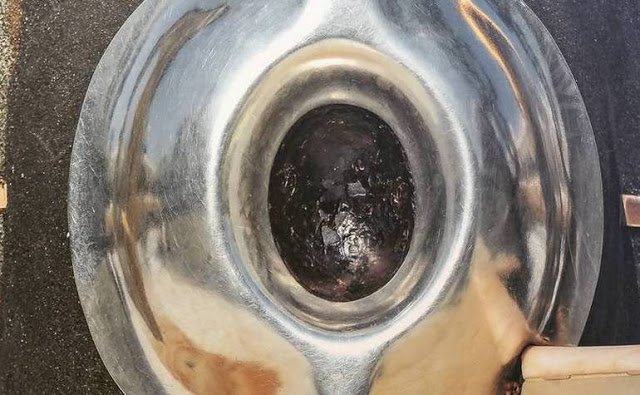
Sejarah Asal Usul Batu Hajar Aswad bermula ketika nabi Ibrahim (Abraham) dan anaknya sedang membangun Ka’bah, dimana pada masa itu banyak sekali komponen-komponen yang tidak terpenuhi. Ka’bah waktu itu belum memiliki atap maupun pintu, jadi Ibrahim dan Ismail berusaha keras untuk membawa bebatuan dari beberapa gunung yang ada untuk menyelesaikan konstruksi bangunan tersebut. Hajar Aswad sendiri menjadi sebuah hal penting ketika umat Islam sedang melakukan perjalan Haji, dimana tawaf dimulai dan diakhiri saat para umat yang sedang berhaji menatap batu ini. Selama bertahun-tahun, tak terhitung lagi jumlah orang termasuk nabi Muhammad, para sahabat, dan jutaan umat Muslim yang mencium batu ini ketika mereka sedang melakukan perjalanan Haji.
Menguak Sejarah Hajar Aswad dan Hubungannya dengan Ka’bah
Asal Usul batu Hajar Aswad tidak bisa lepas dari sejarah Ka’bah itu sendiri. Pembangunan Ka’bah, menurut al-Qur’an pada surat al-Baqarah ayat 127 dilakukan oleh Ibrahim dan anaknya, Ismail. Diceritakan bahwa Allah telah menunjukkan pada Ibrahim dimana mereka harus melakukan pembangunan, yaitu tempat yang amat dekat dengan sumur Zamzam, akhirnya Ibrahim dan Ismail mulai mengerjakan konstruksi Ka’bah kira-kira pada tahun 2130 sebelum masehi. Ketika pembangunan ini tengah berlangsung, Ibrahim menyadari bahwa amat banyak komponen-komponen Ka’bah yang tidak mampu dibuat karena kurangnya bahan, sehingga akhirnya ia dan Ismail pergi menyusuri beberapa gunung untuk membawa bebatuan dengan tujuan menyelesaikan konstruksi Ka’bah tersebut.
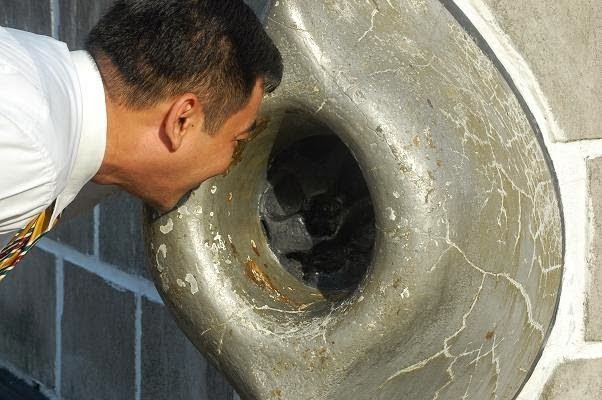
Bahkan setelah seluruh bagian Ka’bah selesai dibangun, Ibrahim masih merasa bahwa ada satu bagian penting yang hilang. Ada salah satu sumber yang mengatakan bahwa Ibrahim memerintahkan Ismail untuk mencarikan satu batu lagi yang dapat memberi “sinyal” kepada umat manusia. Mendengar hal ini, Ismail pergi dari satu bukit ke bukit yang lain hanya demi mencari batu yang bisa menjadi suar dan memberi tanda kepada seluruh umat manusia, dan pada saat inilah, malaikat Jibril diutus Allah untuk membawakan sebuah batu yang konon katanya dulunya berwarna putih dan memberikannya kepada Ismail. Mendapati batu putih yang indah tersebut, Ismail pulang dan alangkah bahagianya Ibrahim melihat batu yang ia bawa. Ismail kemudian menjawab pertanyaan Ibrahim tentang lokasi batu ini dengan jawaban “aku menerima ini dari seseorang yang tidak akan membebani anak cucuku maupun anak cucumu (Jibril)” kemudian Ibrahim mencium batu tersebut, dan gerakan tersebut kemudian diikuti oleh Ismail.
Sejarah Asal Usul batu Hajar Aswad kembali berlanjut setelah batu diletakkan oleh Ibrahim di sudut timur Ka’bah. Tepat setelah melakukan hal itu, Ibrahim mendapat wahyu dimana Allah memerintahkannya untuk pergi dan memproklamirkan bahwa umat manusia harus melakukan ziarah agar Arabia bisa didatangi oleh orang-orang dari tempat yang jauh. Beberapa peneliti percaya bahwa Ka’bah benar dibangun pada tahun 2130 sebelum masehi. Penanggalan ini dinilai konsisten dengan kepercayaan umat Muslim bahwa Ka’bah merupakan masjid pertama dan tertua dalam sejarah. Menurut literatur kaum Samaritan, dalam buku yang berjudul Secrets of Moses tertulis bahwa Ismail dan anak tertuanya, Nebaioth adalah orang yang membangun Ka’bah dan juga kota Mekah. Buku ini dipercaya telah ditulis pada abad ke-10, sementara ada pendapat lain yang menganggap buku ini ditulis pada paruh kedua abad ke-3 sebelum masehi.
Hajar Aswad sendiri sebenarnya sudah menjadi sesuatu yang dihormati bahkan sebelum dakwah tentang Islam oleh Muhammad. Ketika era Muhammad tiba, batu ini juga sudah diasosiasikan dengan Ka’bah. Karen Armstrong dalam bukunya yang berjudul Islam: A Short History, menuliskan bahwa Ka’bah didedikasikan kepada Hubal, salah satu dewa dalam kepercayaan Nabatea, dan di dalamnya ada 365 berhala yang tiap-tiapnya merepresentasikan satu hari dalam satu tahun. Menurut Ibnu Ishaq yang merupakan biografer Muhammad di era awal, Ka’bah sendiri dianggap sebagai dewi, tiga generasi sebelum Islam muncul. Kultur semitik Timur Tengah juga memiliki tradisi untuk menggunakan batu-batu asing sebagai penanda tempat penyembahan, sebuah fenomena yang tertulis baik di Injil Yahudi maupun Qur’an.
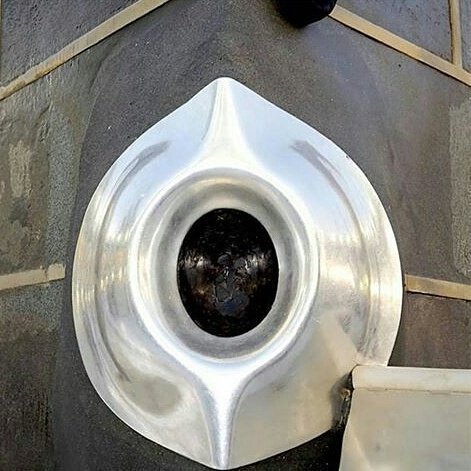
Pada era Nabi Muhammad SAW, sejarah batu Hajar Aswad menjadi penting saat beberapa klan di Mekah berkelahi untuk menentukan siapa yang pantas meletakkan Hajar Aswad kembali ke Ka’bah setelah renovasi akibat kebakaran besar. Setelah sebelumnya hampir terjadi perang, para tetua klan mulai menyetujui usulan bahwa mereka harus bertanya kepada orang berikutnya yang melewati gerbang Ka’bah, dan kebetulan orang itu adalah Muhammad yang masih berusia 35 tahun. Setelah mendengar pokok permasalahan, Muhammad meminta para pemimpin klan untuk membawakannya sebuah kain, yang kemudian ia gunakan untuk meletakkan Hajar Aswad di bagian tengah kain tersebut. Setelah diletakkan, Muhammad meminta setiap ketua klan untuk memegang sisi ujung dari kain tersebut, mengangkatnya, dan membawanya ke posisi yang tepat untuk meletakkan Hajar Aswad. Setelah tiba di tempatnya, Muhammad sendiri yang mengambil dan meletakkan Hajar Aswad di posisi yang seharusnya, dan hal ini berhasil menggagalkan perang yang mungkin terjadi di antara klan-klan Mekah tadi.
Sejarah mengenai batu Hajar Aswad terus berlanjut tapi sebelumnya ia sempat mengalami beberapa kerusakan yang signifikan. Batu ini juga diceritakan pernah pecah oleh batu yang ditembakkan oleh katapel saat terjadi penyerangan Mekah oleh Umayyad. Fragmen-fragmen batu yang pecah itu kemudian disatukan kembali oleh Abdullah Ibnu Zubayr menggunakan perak. Pada tahun 930, batu tersebut dicuri oleh kaum Qarmati hingga ke tempat yang sekarang bernama Bahrain. Kini, batu ini menjadi bagian penting dalam upacara keagamaan umat Islam, yaitu ketika mereka melaksanakan haji.
Sekian artikel singkat mengenai asal usul batu hajar aswad, semoga menjadi pengetahuan baru untuk anda semua. Terima kasih telah mengunjungi halaman kami Kumpulan Sejarah.
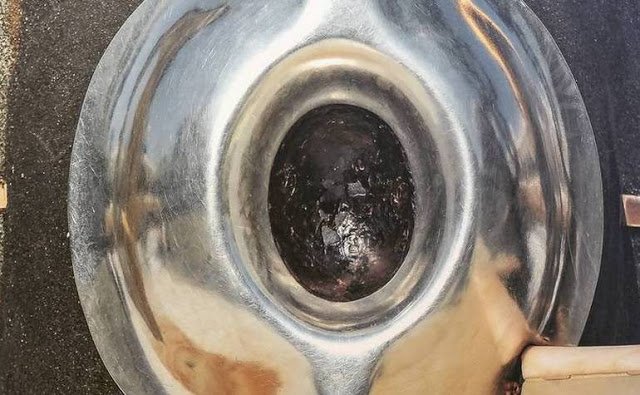
English
History The origin of Stone of Hajar Aswad begins when the prophet Abraham (Abraham) and his son were building the Ka'bah, where at that time there were many unfulfilled components. The Ka'bah did not yet have a roof or door, so Ibrahim and Ismail tried hard to bring rocks from some mountains to complete the construction of the building. Hajar Aswad itself becomes an important thing when Muslims are doing the Hajj trip, where tawaf begins and ends when the people who are on hajj staring at this stone. For years, countless numbers of people including the prophet Muhammad, his companions, and the millions of Muslims who kissed this rock while they were on Hajj trip.
Revealing the History of the Black Stone and its Relation to the Ka'ba
The origin of the stone of Hajar Aswad can not be separated from the history of the Ka'bah itself. Development of the Ka'bah, according to the Qur'an in the letter of al-Baqarah verse 127 done by Ibrahim and his son, Ismail. It is narrated that God showed to Abraham that they should do development, a place very close to the well of Zamzam, eventually Ibrahim and Ismail began working on the construction of the Ka'bah sometime in 2130 BC. As the construction progressed, Ibrahim realized that there were so many components of the Ka'bah that could not be made because of the lack of material, so that he and Ishmael went on through the mountains to carry the rocks with the aim of completing the construction of the Ka'bah.
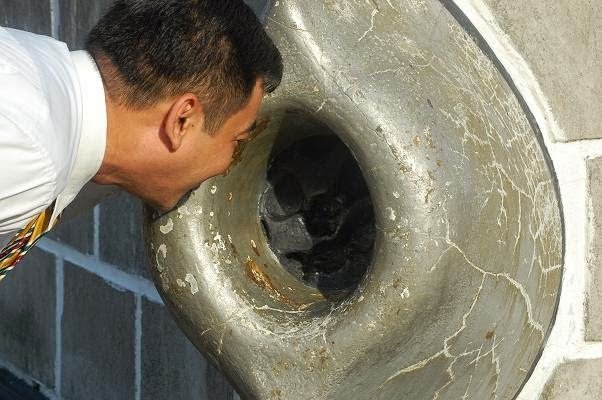
Even after the entire section of the Ka'bah was completed, Ibrahim still felt that there was an important part missing. There is one source who says that Ibrahim ordered Ishmael to find another stone that could give "signals" to mankind. Hearing this, Ishmael went from one hill to another just to look for a rock that could be a beacon and give a sign to all mankind, and it was at this time that the angel Gabriel was sent by God to bring a stone which he supposedly said was white and gave it to Ismail. Finding the beautiful white stone, Ishmael returned home and how happy Ibrahim saw the stone he was carrying. Ismail then answered Ibrahim's question about the location of this stone with the answer "I accept this from someone who will not burden my grandchildren and your grandchildren (Gabriel)" then Ibrahim kissed the stone, and the movement was followed by Ismail.
History The origin of the Stone of Hajar Aswad resumed after the stone was laid by Ibrahim at the eastern corner of the Ka'bah. Right after that, Ibrahim got the revelation that God commanded him to go and proclaimed that mankind should make a pilgrimage so that Arabia could be visited by people from far away. Some researchers believe that the Kaaba was actually built in 2130 BC. This calendar is judged to be consistent with Muslims' belief that the Kaaba is the first and oldest mosque in history. According to the Samaritan literature, in a book called Secrets of Moses it is written that Ishmael and his eldest son Nebaioth were the ones who built the Kaaba and also the city of Mecca. This book is believed to have been written in the 10th century, while there are other opinions that consider this book written in the second half of the 3rd century BC.
Hajar Aswad himself has actually become something that is respected even before the da'wah about Islam by Muhammad. When the era of Muhammad arrived, this stone has also been associated with the Kaaba. Karen Armstrong in his book Islam: A Short History, writes that the Ka'bah is dedicated to Hubal, one of the gods in the beliefs of Nabataea, and in it there are 365 idols that represent one day a year each. According to Ibn Ishaq who was the biographer of Muhammad in the early era, the Ka'bah itself is considered a goddess, three generations before Islam emerged. Middle Eastern semitic cultures also have a tradition of using foreign stones as a marker of worship, a phenomenon written in both the Jew and the Qur'an.
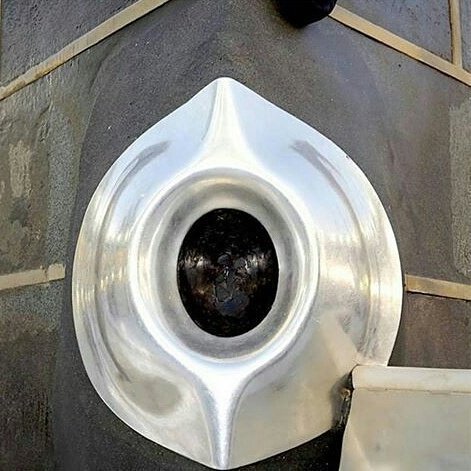
In the era of the Prophet Muhammad SAW, the history of the Stone of Hajar Aswad became important when several clans in Mecca fought to determine who deserved to put the Black Stone back to the Ka'bah after the renovation due to the great fire. After nearly war, clan elders began to agree that they should ask the next person who passed through the gate of the Ka'bah, and incidentally that person was Muhammad who was 35 years old. After hearing the point, Muhammad asked the clan leaders to bring him a cloth, which he then used to put the Black Stone in the center of the cloth. Once placed, Muhammad asked each clan chairman to hold the ends of the cloth, lift it up, and bring it to the right position to lay the Black Stone. Upon arriving at his place, Muhammad himself took and placed the Black Stone in the proper position, and this succeeded in thwarting the war that might have occurred among the Meccan clans.
The history of the Stone of Hajar Aswad continued but before he had experienced some significant damage. The stone is also told to have been broken by a stone fired by a catapult during the Mecca attack by Umayyad. The broken stone fragments were then reunited by Abdullah Ibn Zubayr using silver. In 930, the stone was stolen by the Qarmati to what is now Bahrain. Now, this stone becomes an important part in the religious ceremony of Muslims, that is when they perform the pilgrimage.
A few short articles about the origin of stone aswad, may be new knowledge for you all. Thank you for visiting our History History page.
Source:
- Menulis Sejarah (https://menulissejarah1.blogspot.co.id/2017/05/asal-usul-batu-hajar-aswad-dalam-sejarah.html?m=1)
FOLLOW ME
